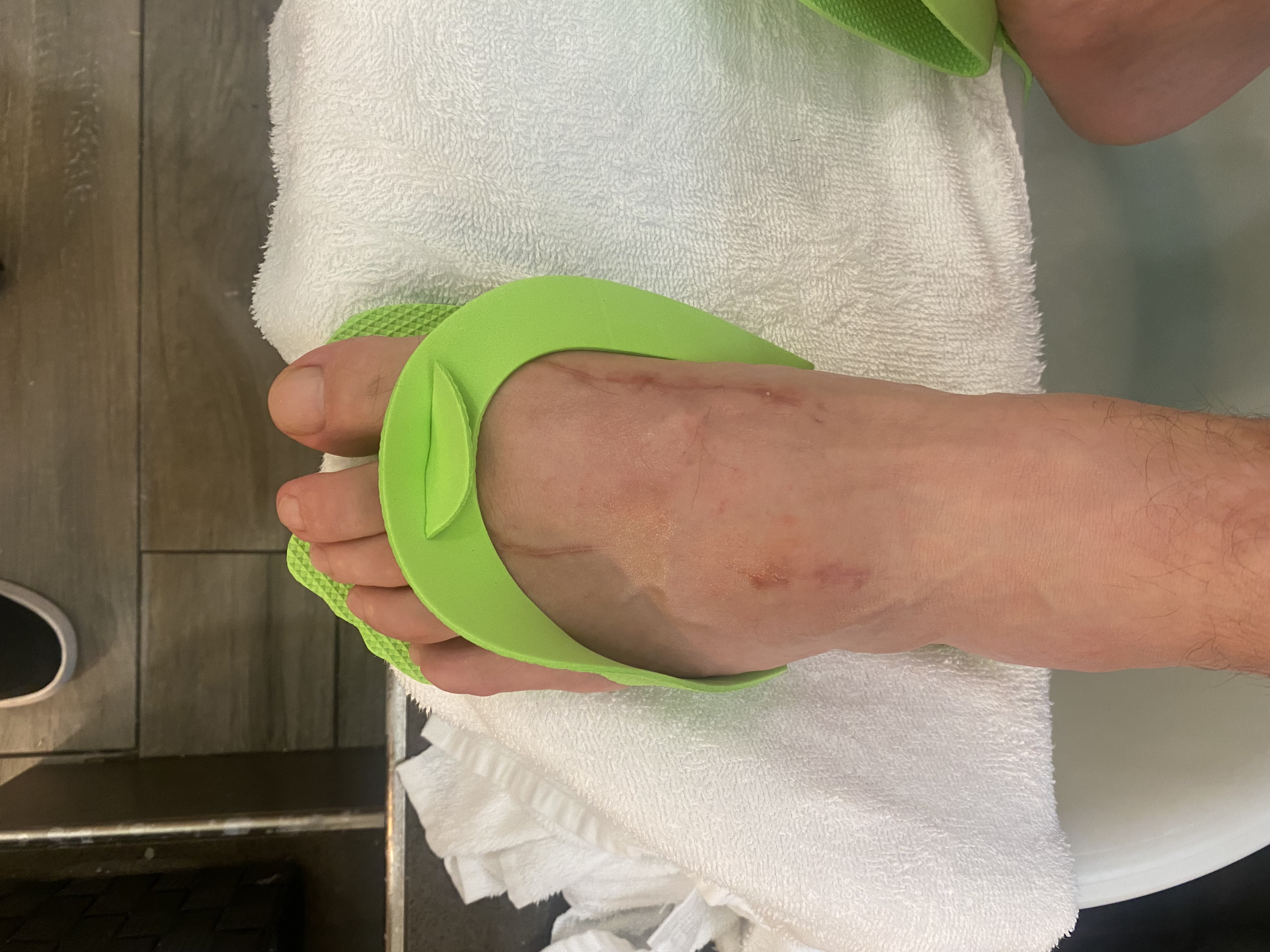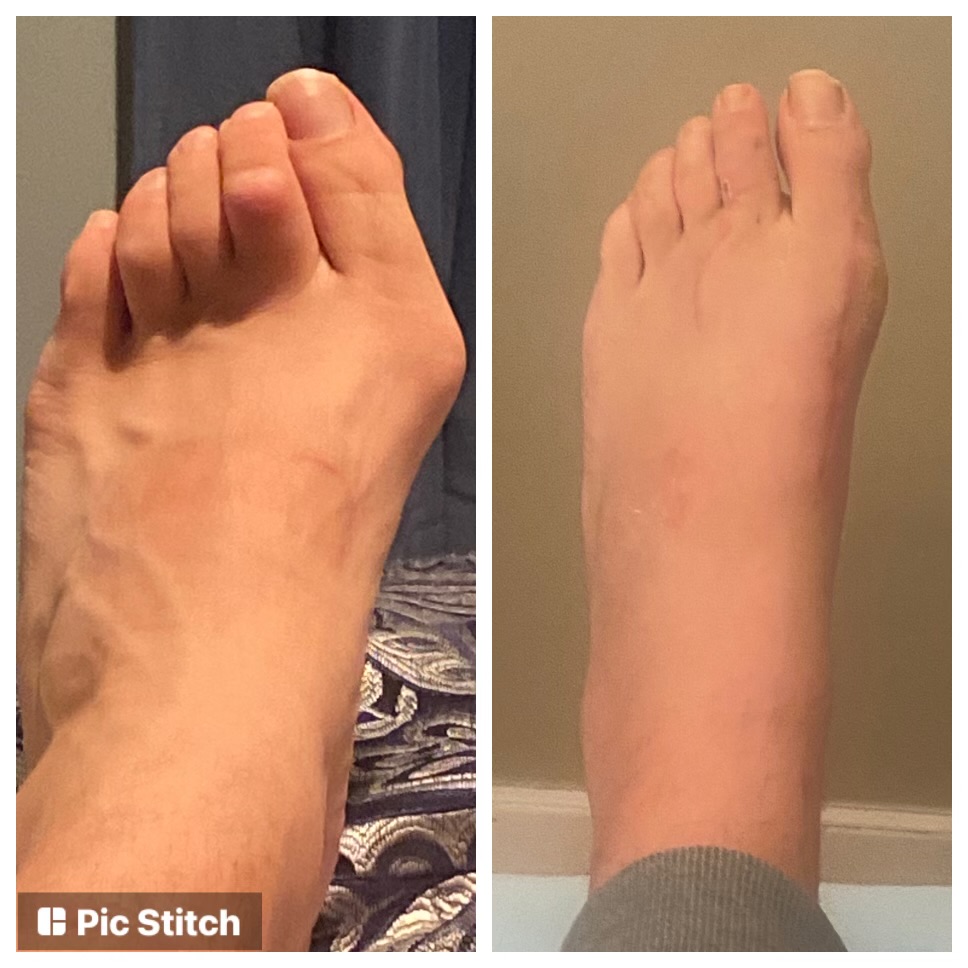
What is LapiFuse?
Some bunion procedures can shorten and alter the look of your toe, that may cause pain and other foot-related issues down the road. LapiFuse is different. Traditional fusion surgeries simply correct bunion deformities at only the big toe joint. By using what is known as “Triplanar Correction,” LapiFuse can correct foot deformities caused by bunions at the source of the problem leading to holistic treatment that can reduce pain, all while preserving the natural look of the foot.

Reasons to Believe in LapiFuse
LapiFuse Checks Off Every Box!

Improved appearance
Bunion correction treatment that removes the bunion and preserves the length of the toe to protect the natural appearance of the foot.

Pain reduction
The LapiFuse procedure is designed to reduce pain and the likelihood of future procedures1,2 by eliminating the bunion and maintaining the alignment achieved during the procedure.

Improved mobility
Specifically designed to improve mobility by addressing the issue in the midfoot, which preserves the joint movement of the big toe, allowing you to get back to your active lifestyle.
Is it time to consider LapiFuse?
TAKE THE NEXT STEPHow does it work?
The time required for the LapiFuse procedure is unique to each patient and surgeon. Generally, the LapiFuse procedure will take 45-60 minutes. During the procedure, your surgeon will make a few small incisions to expose the affected joint. After preparing the joint, they will then rotate the joint to return it to its proper alignment, restoring the foot to its natural appearance. To secure the correction, your surgeon will apply anatomically correct titanium plates, to the joint.
Recovery instructions may vary by surgeon, and results are specific to individual patients. It is recommended that you keep your foot elevated to heal for the first week post-procedure; then after 10 days, you will be placed in a bunion dressing and short walker boot. After 6 weeks, your doctor will remove the boot and you should be able to wear normal footwear. Please consult your doctor on recovery instructions to ensure optimal healing.
FAQs
Q: What makes the LapiFuse procedure different from other bunion correction surgeries?
A: Some bunion correction procedures require shortening of the toe and large incisions that can affect how
the foot looks, while potentially creating new pain and leading to additional surgical procedures.
The LapiFuse Bunion Procedure is designed to preserve toe length, reduce pain and restore the natural
appearance of the foot.2
Q: How long does the LapiFuse procedure take?
A: The time required for the LapiFuse procedure is unique to each patient and surgeon. Generally, the LapiFuse procedure will take 45-60 minutes.
Q: What will my recovery look like?
A: Recovery instructions may vary by surgeon. Results are specific to individual patients. During the first week after your procedure, it is generally recommended that you keep your foot elevated to heal. Then, 10 days post-operation, you may be placed in a bunion dressing and short walker boot. After 6 weeks, your doctor may remove the boot and you should be able to wear normal footwear. However, please consult your doctor on recovery instructions to ensure optimal healing.
Q: Will the procedure improve my mobility?
A: Because the LapiFuse procedure preserves the joint movement of the big toe, it is specially designed to improve mobility, letting you get back to your active lifestyle. Typically, patients should be able to return to regular physical activity 6-7 weeks after their procedure. However, please consult your doctor on recovery instructions to ensure optimal healing. Recovery instructions may vary by surgeon. Results are specific to individual patients.
Q: When can I wear loose fitting closed-toe shoes again?
A: Typically, at 6-7 weeks, patients are allowed full weight bearing in loose fitting close toed shoes.
Your doctor will provide you with recovery instructions to ensure optimal healing.
Recovery instructions may vary by surgeon. Results are specific to individual patients.
Q: Is it possible for my bunion to return after surgery?
A: Surgical correction of bunions seeks to address the underlying structural causes of bunions and the LapiFuse procedure is specially designed with compression technology to reduce the likelihood that bunions will return. However, there is a possibility that the bunions may return and, to reduce that risk, be sure to comply fully with your doctor’s recovery instructions.1
Is LapiFuse Right for Me?
Use the discussion guide below when speaking with your doctor to determine if surgery is the right next step.
- How long have you had bunions?
- What non-surgical or at-home treatments have yu/do you use for temporary relief?
- Does your bunion pain ever make it difficult to walkor stand for long periods of time?
- Does your bunion pain ever prevent youfrom daily activities or exercise?
Bunion surgery: before & after
References:
- Galli, et al. JFAS vol. 54 (2015) 437–440.
- Walker, Harris. Foot Ankle Clin N Am vol. 24 (2019) 641–648
For important risk information click here
Individual results and activity levels after surgery vary and depend on many factors including age, weight and prior activity level. There are risks and recovery times associated with surgery and there are certain individuals who should not undergo surgery. Only a physician can tell you if this product and associated procedure are right for you and your unique circumstances. Please consult with a physician for complete information regarding benefits, risks, anticipated implant duration and possible outcomes.
AP-016029


